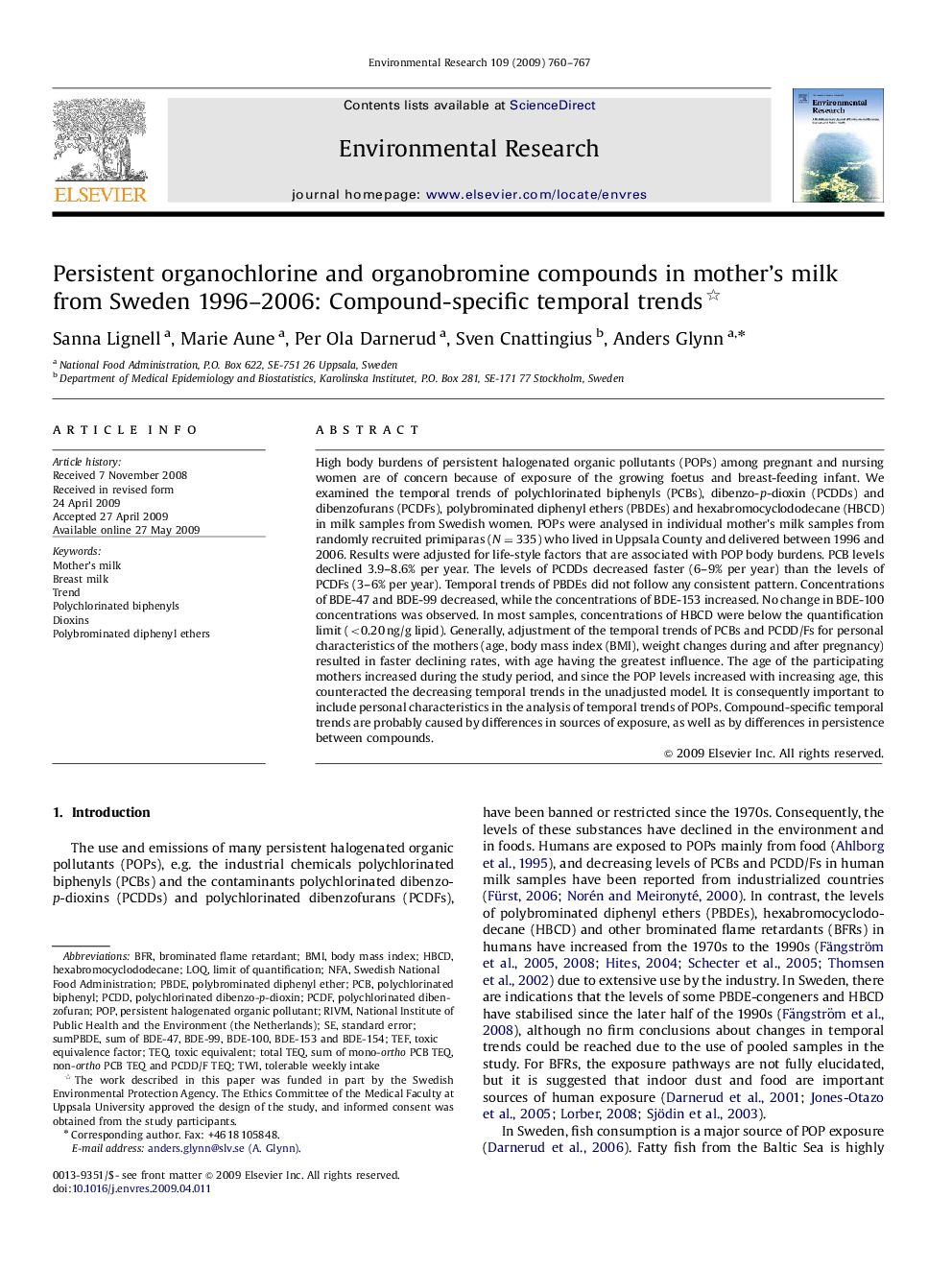| کد مقاله | کد نشریه | سال انتشار | مقاله انگلیسی | نسخه تمام متن |
|---|---|---|---|---|
| 4470549 | 1314431 | 2009 | 8 صفحه PDF | دانلود رایگان |

High body burdens of persistent halogenated organic pollutants (POPs) among pregnant and nursing women are of concern because of exposure of the growing foetus and breast-feeding infant. We examined the temporal trends of polychlorinated biphenyls (PCBs), dibenzo-p-dioxin (PCDDs) and dibenzofurans (PCDFs), polybrominated diphenyl ethers (PBDEs) and hexabromocyclododecane (HBCD) in milk samples from Swedish women. POPs were analysed in individual mother's milk samples from randomly recruited primiparas (N=335) who lived in Uppsala County and delivered between 1996 and 2006. Results were adjusted for life-style factors that are associated with POP body burdens. PCB levels declined 3.9–8.6% per year. The levels of PCDDs decreased faster (6–9% per year) than the levels of PCDFs (3–6% per year). Temporal trends of PBDEs did not follow any consistent pattern. Concentrations of BDE-47 and BDE-99 decreased, while the concentrations of BDE-153 increased. No change in BDE-100 concentrations was observed. In most samples, concentrations of HBCD were below the quantification limit (<0.20 ng/g lipid). Generally, adjustment of the temporal trends of PCBs and PCDD/Fs for personal characteristics of the mothers (age, body mass index (BMI), weight changes during and after pregnancy) resulted in faster declining rates, with age having the greatest influence. The age of the participating mothers increased during the study period, and since the POP levels increased with increasing age, this counteracted the decreasing temporal trends in the unadjusted model. It is consequently important to include personal characteristics in the analysis of temporal trends of POPs. Compound-specific temporal trends are probably caused by differences in sources of exposure, as well as by differences in persistence between compounds.
Journal: Environmental Research - Volume 109, Issue 6, August 2009, Pages 760–767